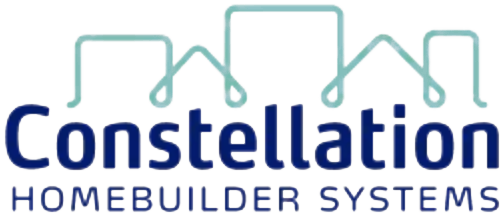Technology
Homebuilders Temper Upbeat Stance With A Dose Of Caution
Although market sentiment and performance – as an old friend used to say – are "better than when they were worse," few operators take a whole lot of comfort in believing that destructive turbulence is mostly over and done with.

Wall Street was euphoric as investors bet a Fed pivot on its funds rate would come sooner than later, and drop faster than slower.
Now, not so much.
Are homebuilders – buoyed by identical expectations of falling rates, a more affordable monthly payments barrier to entry, and a strong economy to boot – also premature in betting they've weathered the worst of a turbulent post-pandemic obstacle course?
Homebuilder sentiment has returned from a 12-month low in October for two successive months.
The February National Association of Home Builders(NAHB)/Wells Fargo Housing Market Index clocked in as a "sharp increase in builder confidence to begin the new year."
That's according to Robert Dietz, NAHB Chief Economist, who adds this color to his topline observation about the data:
Builder confidence in the market for newly built single-family homes climbed seven points to 44 in January, according to the National Association of Home Builders (NAHB)/Wells Fargo Housing Market Index (HMI). This second consecutive monthly increase in builder confidence closely tracks with a period of falling interest rates."
Here's the illustration of the trend, which also shows how builder confidence tracks as a reliable directional pre-indicator for seasonally-adjusted single-family housing starts.

The NAHB/Wells Fargo HMI is not alone as a measure of a more upbeat planning and operating business environment once interest rates peaked in October 2023, and headed back down since then, as the Fed flashed signals that efforts to deflate the economy were working.
Here are a couple of vignettes from recently-fielded surveys whose findings sync with those of the broader NAHB survey.
This one, the December Private Homebuilder Survey, from the Wolfe Research homebuilding and building products equity analysis team led by Truman Patterson, sums up self-reported sales and traffic performance measures rather than "sentiment." The topline takeaway from that report reads:
Our Private Builder contacts’ December Orders increased +8% MoM, outperforming New Home Sales’ -3.6% average historical sequential performance by ~11 PPTs. As we mentioned in last month’s survey takeaways, we expected December sales to outperform historical seasonality given the decline in rates throughout November, which continued through December. Our Contacts’ December Orders increased +45% YoY following November’s +43% YoY result. Net, our contacts’ 4Q Orders increased +39.5% YoY, in-line with our 4Q Public builder Order growth expectation of +39.4% YoY."
Meanwhile, according to the December BTIG/HomeSphere survey, 28% of builders reported year-over-year increases in sales, compared to 16% in November. 23% of builders saw a year-over-year increase in traffic compared to just 13% last month.
Per BTIG/Homesphere:
- December sales and traffic trends improved over November, and sharply from 2022.
- 28% of respondents reported yr/yr increases in sales orders per community vs. 16% last month and 7% in December 2022.
- 40% saw yr/yr decreases in orders vs. 48% last month and 71% for December 2022.
- 23% reported an increase in yr/yr traffic at communities and 39% saw a decline vs. last month’s readings of 14% and 47%, respectively, last month and 10% and 70%, respectively, in December 2022.
- Sales performance relative to internal expectations improved slightly while traffic expectations were positive for the first time since July.
- Sales
- 25% of respondents saw sales as better than expected, while 31% saw sales as worse than expected, representing a negative spread of -6.
- In November, 19% of respondents saw sales better than expectations compared to 31%, for a negative spread of -12.
- Traffic
- 24% of builders saw traffic as better than expected, while 20% reported that traffic was worse than expected, representing a positive spread of +4, the first positive spread on traffic since July 2023.
- This is substantially improved from November, with 16% and 31% respectively, a -15 spread.
- Sales
That's the good news. The hesitation here is about a potentially mistaken interpretation that private homebuilders may pervasively believe that market conditions have shifted in their favor. A line that Calculated Risk host Bill McBride includes in his monthly update on the NAHB/Wells Fargo survey's headline data point cautions:
Any number below 50 indicates that more builders view sales conditions as poor than good."
So, although market sentiment and performance – as an old friend used to say – are "better than when they were worse," few operators take a whole lot of comfort in believing that destructive turbulence is mostly over and done with.
Another friend shared this analysis, suggesting that sharply divergent business realities between America's large public companies and its tens of thousands of midsized firms may explain parallels in the night-and-day differences in context and outlook among public and private homebuilding organizations. This would be particularly true for private operators whose financial lifeline has typically been regional and local bank lenders for project and entity-level capital financing.
The Axios report notes:
The findings: Between 2019 and the end of 2022 (the most recent full-year data), earnings before interest, taxes, depreciation and amortization (EBITDA) — a key measure of earnings — declined 24% for midmarket companies. For public companies, it soared 18%.
EBITDA margins collapsed by 25% in the midmarket; the Russell 3000's margins only softened by 2%.
Financial leverage, or the ratio of debt to EBITDA, rose 62% in the midmarket; in stark contrast, it declined 14% among public companies.
The big picture: "Beneath the surface of the ticker-tape economy made up of large public companies is the real economy — the middle market — with more limited access to capital," writes Marblegate in the paper.
And larger companies have the scale that helps them better absorb financial shocks and pass on problems — like threats to their margins — to others, like their vendors, which are often midmarket companies.
"The economic stress that has threatened the margins at large companies appears to have largely been passed on to the suppliers and vendors of the middle market," the paper says
All the more reason for operators large and small to draw on the power of business systems, a business culture of capability, data, and connective-tissue technologies to double-down focus on the customer-journey lifecycle as the driving force for the business, land development, and building lifecycle.
One goal we hear consistently from homebuilders of all sizes is the desire to improve the homebuyer experience," Bob Swainhart, General Manager – Enterprise Solutions, Constellation HomeBuilder Systems. "There are many reasons why this is a high priority for many builders. Businesses that put their customers first are more likely to achieve long-term success. This is especially true in an industry like homebuilding where buying a home is one of the biggest purchases a person will make in their lives. Beyond a duty to the customer, creating a great homebuyer experience is also a profitable objective. It can help builders reduce costs throughout the homebuilding process and drive valuable customer referrals in the future."
Constellation provides fully-integrated or standalone software solutions expertly engineered to manage the complete ecosystem of a homebuilder’s business functions and growth.
MORE IN Technology
How A Broken Furnace Led To An Innovative New Power Solution
With new and emerging Federal and state energy credits that homebuilders and residents can tap into, the system nets out to an expense win on both fronts.
Ground Control: Creating A Digital Marketplace To Move Dirt
A $100 billion-a-year lending pool to acquire and develop the ground for homesites partially supports a parallel universe $50-billion addressable market that begs for a solution to a pain point: moving dirt.
Tapping Linda Mamet As EVP, Tri Pointe's Tech-Fueled Future Accelerates
"We can now focus fully on ideas like a single source of truth. This means holistic integrations among our platforms – where information moves meaningfully in real-time, back-and-forth between what the customer is doing and what we are doing internally." -- Linda Mamet, EVP, Tri Pointe Homes


